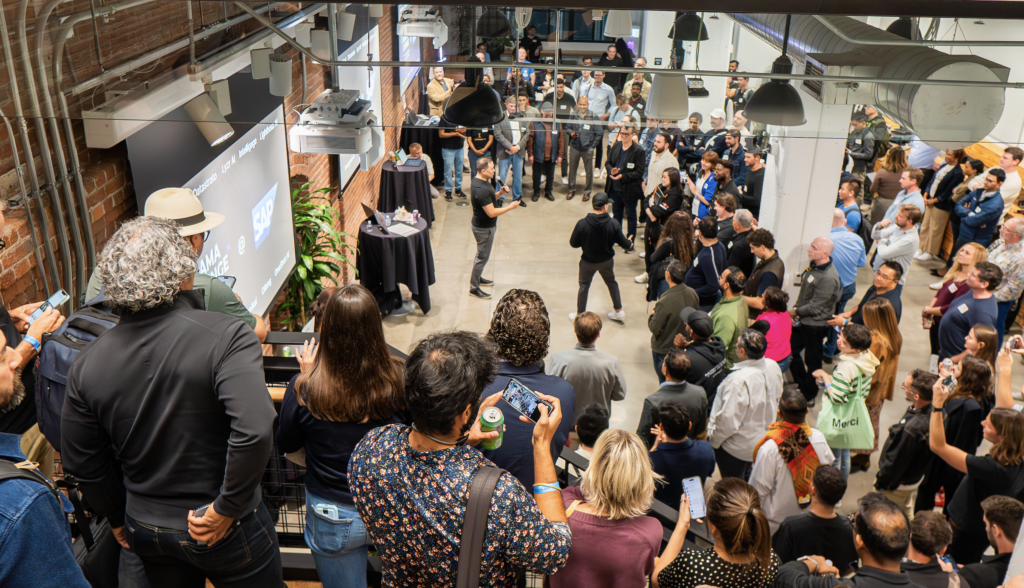Technical moats only last 3-6 months; AI startups need these 3 strategies

Photo: I’m addressing Llama Lounge 14 hosted at SAP Labs in SF: AI founders, AI investors and corporate AI Leaders, photo by Erick Davidson.
I meet AI founders who brag about their technology, but in reality: AI Startups have a 3-6 month technical moat. Their competitors can rapidly copy them and one single tweet from Sam Altman about the next release can eradicate their market lead. Good news, I have some defensible strategies I will share below.
Bloody red ocean crowded market: There are nearly 20,000 AI projects according to the latest internet database, Theres an AI for That. Each week, I review dozens—sometimes over 100—of AI startups for my Llama Lounge event series (also see photos) and formal pitches as a VC. Many are undifferentiated, stuck in crowded categories, or destined to be overtaken by tech giants or foundational models by the next tweet thread from Sam Altman or a press release from Google.
What I Look For:
Baseline and initial screen: team and market analysis. First, the baseline differentiators: team credibility, leadership, background diversity, and the ability to adapt. Does the team have a unique market advantage? Are they creative enough to find new markets instead of competing in a bloody red ocean?
Three Business Strategies for AI Startups:
- Access to Exclusive Data: Over 80% of the world’s data is estimated to be behind firewalls—corporate, government, personal clouds. Does the startup have unique and direct access to this untapped data? Do users legally opt in to provide data, and is that data then refined and improved? If B2B, do they have exclusive contracts that grant market superiority? What we’re looking for is a unique defensive data moat that no one else has.
- Product-Led Growth/Viral Effects: Does the product spread naturally without marketing or sales? This is product-led growth. Advanced forms include viral effects and compounding viral loops. On the consumer side, social networks thrive on this as friends invite friends. In B2B, products like DocuSign, Box, and Zoom spread through user invites. The result: the product naturally spreads with little or no marketing, advertising, or sales.
- Network Effects: When value increases for each new user or client that joins. For example, marketplaces benefit as more buyers and sellers join, creating more options. Another example: app platforms gain as more data, apps, and developers participate. The result: loyalty and high-switching costs with little effort that results in rapid market expansion.
Combining all three strategies will likely result in a defensible unique flywheel, and the AI startup can quickly expand (at low cost) to become the defensible leader in their market —it’s not just about technology moats.
If attributes 2 and 3 sound familiar, they should—they’re the foundation of our investment thesis at Blitzscaling Ventures, as outlined in the best-selling book called Blitzscaling by Chris Yeh (my friend for 20 years and now my business partner) and Reid Hoffman (our major LP and special advisor). We filter and score startups based on these factors and can quickly spot which companies have what it takes to truly stand out. Read more about the blitzscaling scorecard on this recent blog post by Chris Yeh.
I may dig into this in a future post: I assume that AI entities are creating AI projects. which will even further flood the market. PS: this is why I call them “AI Projects” as they may not be registered companies led by humans.